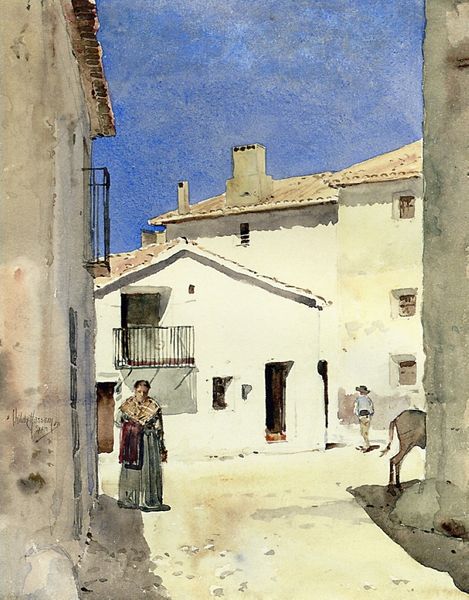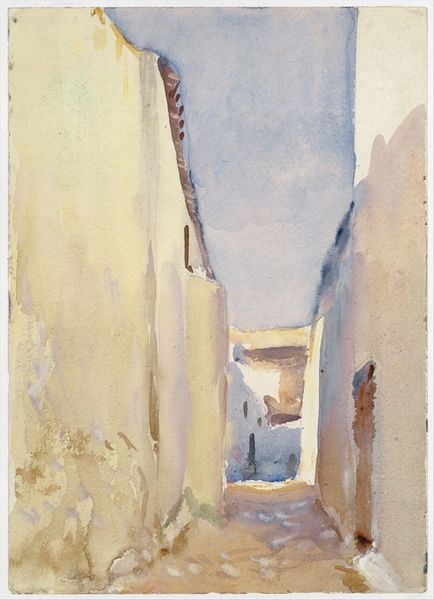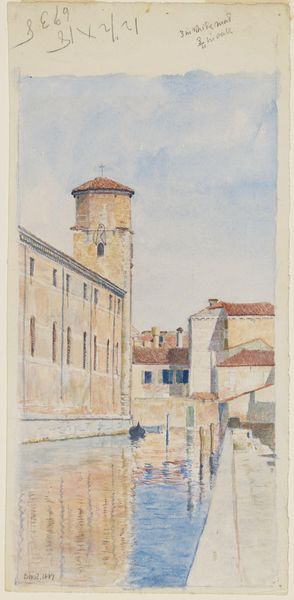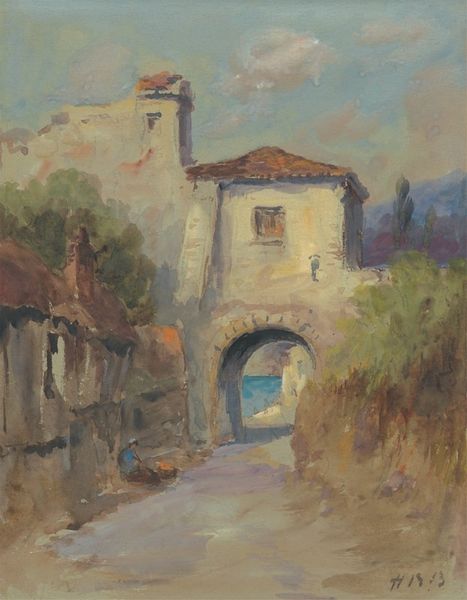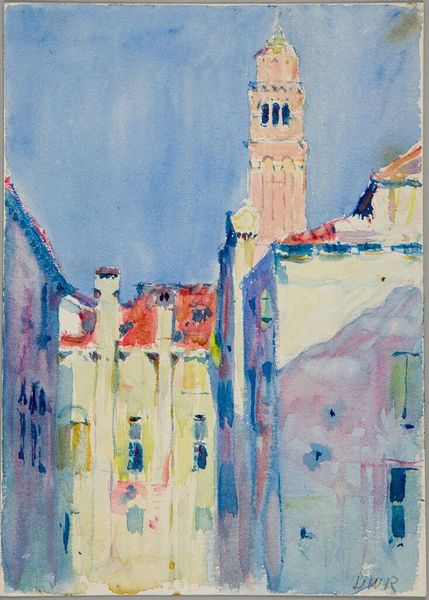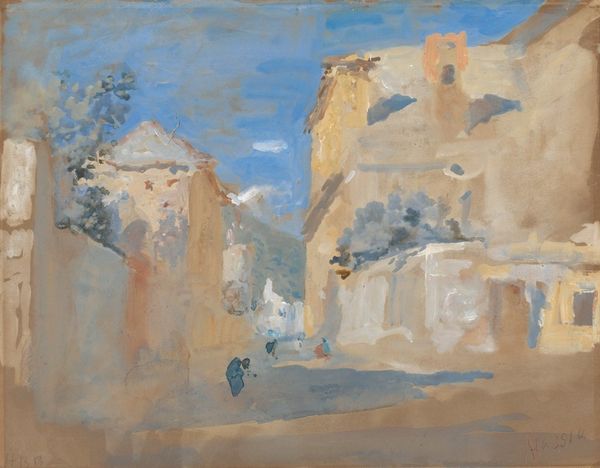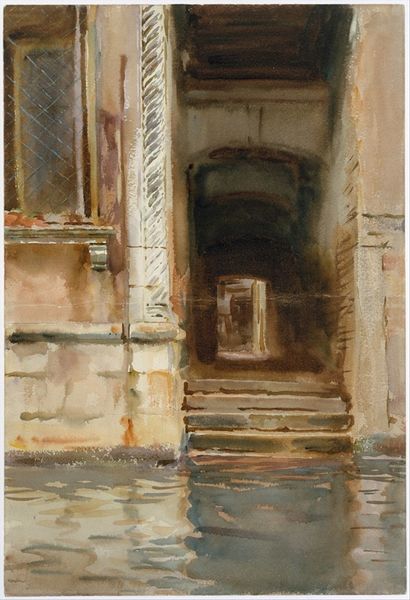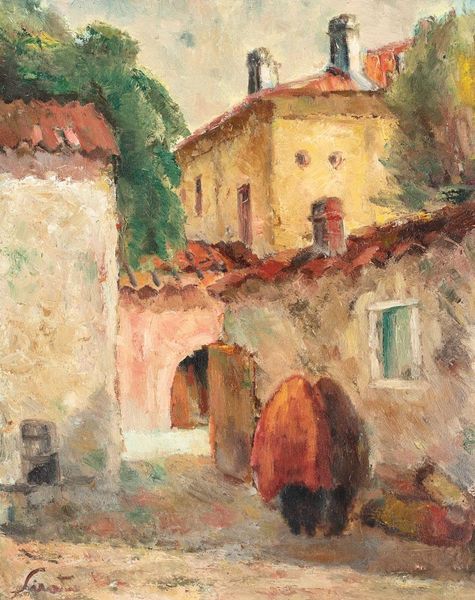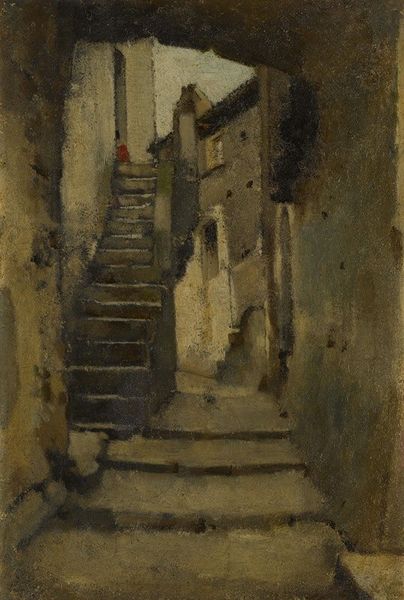
Copyright: Public Domain: Artvee
Editor: We’re looking at John Singer Sargent's "Camprodon, Spain," created around 1892 using watercolor. I'm immediately drawn to how he captures light. It feels fleeting, ephemeral almost, the way the colors wash into each other. How do you interpret this work? Curator: The brilliance lies, as you observe, in Sargent's orchestration of light and color. The watercolor medium here isn't just descriptive; it's fundamentally structural. Note how the building facades aren’t rendered with sharp lines but with graded washes that define their planes and recession into space. Observe, particularly, how he exploits the white of the paper, letting it function as light itself, bouncing off the forms. Editor: So it's less about depicting a specific place and more about exploring the visual relationships between forms and light through color? Curator: Precisely. The subject matter, though identifiable as a cityscape, serves primarily as a vehicle for a sophisticated investigation of pictorial space. Consider the way the sky is handled – seemingly loose, yet containing subtle shifts in tone that suggest atmospheric depth and movement. Do you see how those cloud forms almost mimic the architectural forms below? Editor: I do. The composition is echoing itself! So it's all working together—form, light, and color—to create a self-contained visual experience. Curator: Yes. And it's precisely in that self-referentiality, in the pure aesthetic relationship between the visual elements, that the work's true meaning resides. It presents a harmonious and compelling visual study. Editor: That’s a perspective that really highlights Sargent’s artistic skills rather than a need for historical interpretations. I’ll look at watercolors much differently now.
Comments
No comments
Be the first to comment and join the conversation on the ultimate creative platform.

